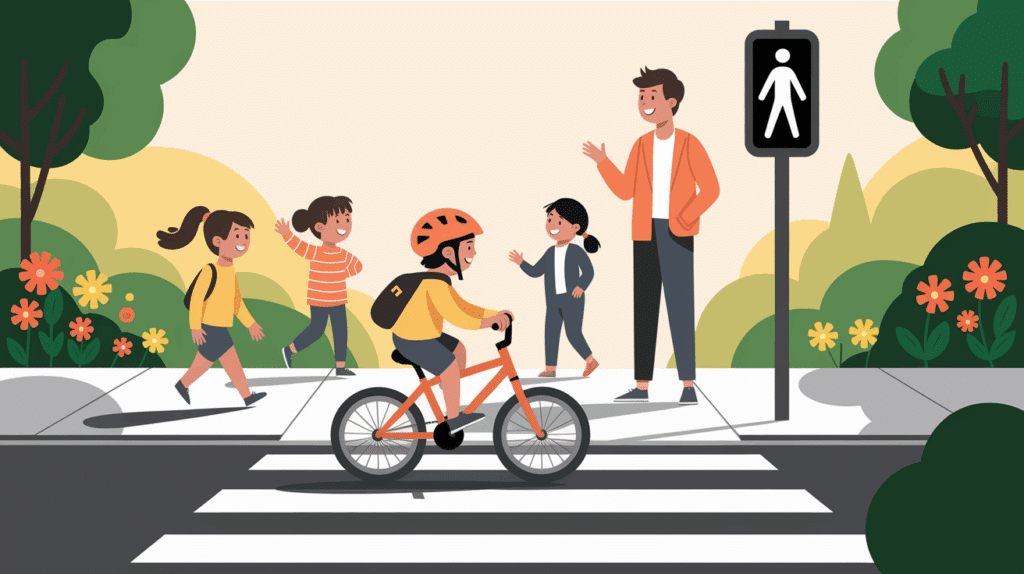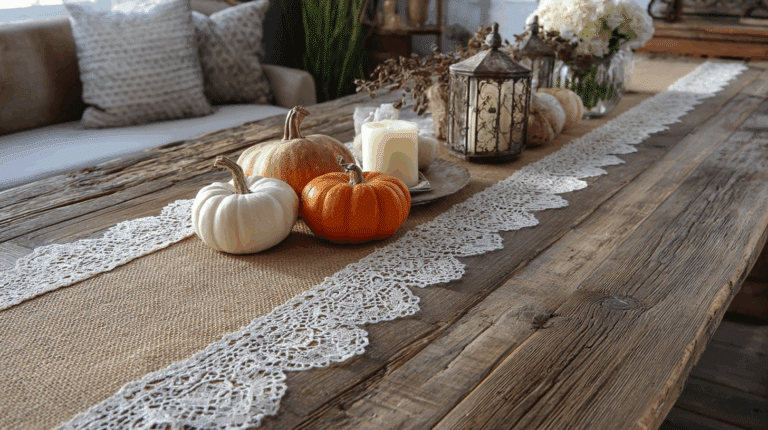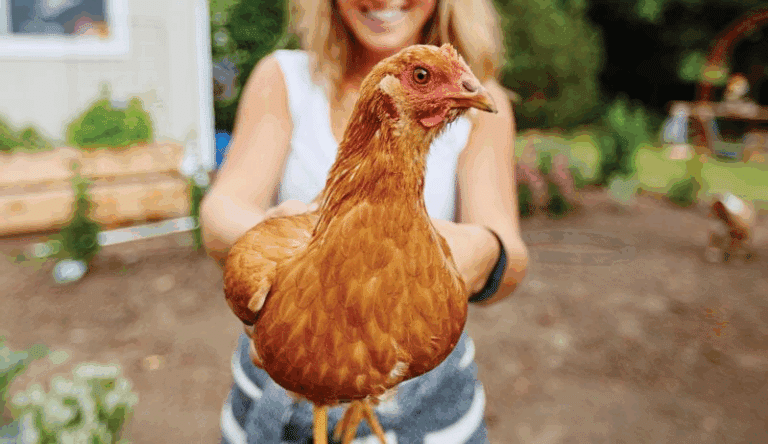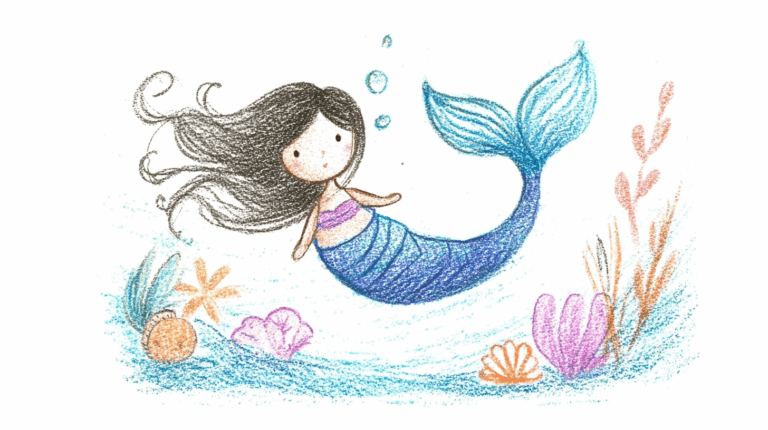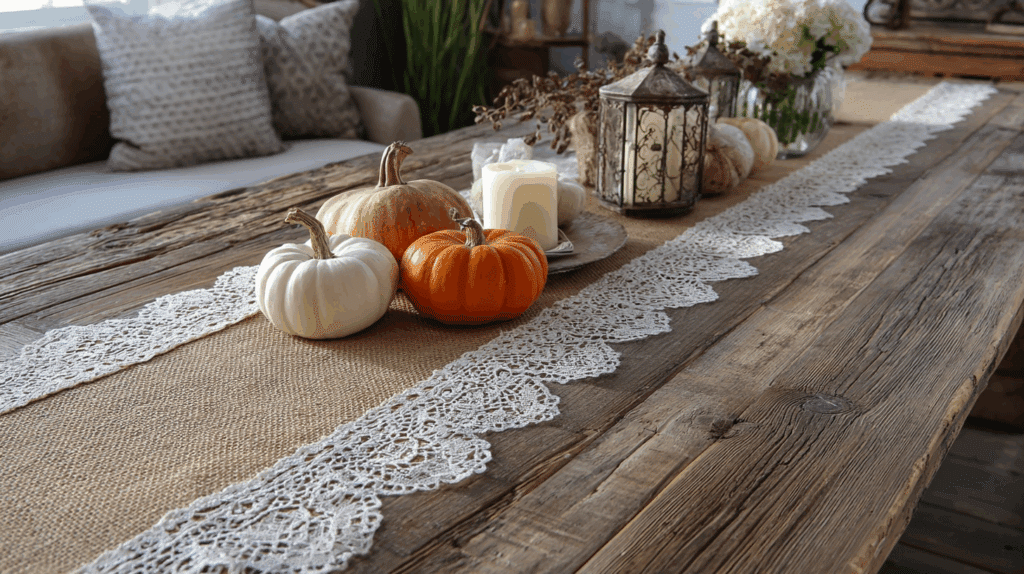Teachers often struggle to find fresh ideas that keep children entertained and learning. The challenge grows when supplies are limited and time is short.
Simple, everyday items can change into community helpers preschool lessons that stick with children for years.
No fancy materials or hours of prep needed – just creativity and basic supplies.
Classrooms and living rooms can become mini-communities where children learn through play. These activities help them understand their world while building essential skills for the future.
Who Are Community Helpers?
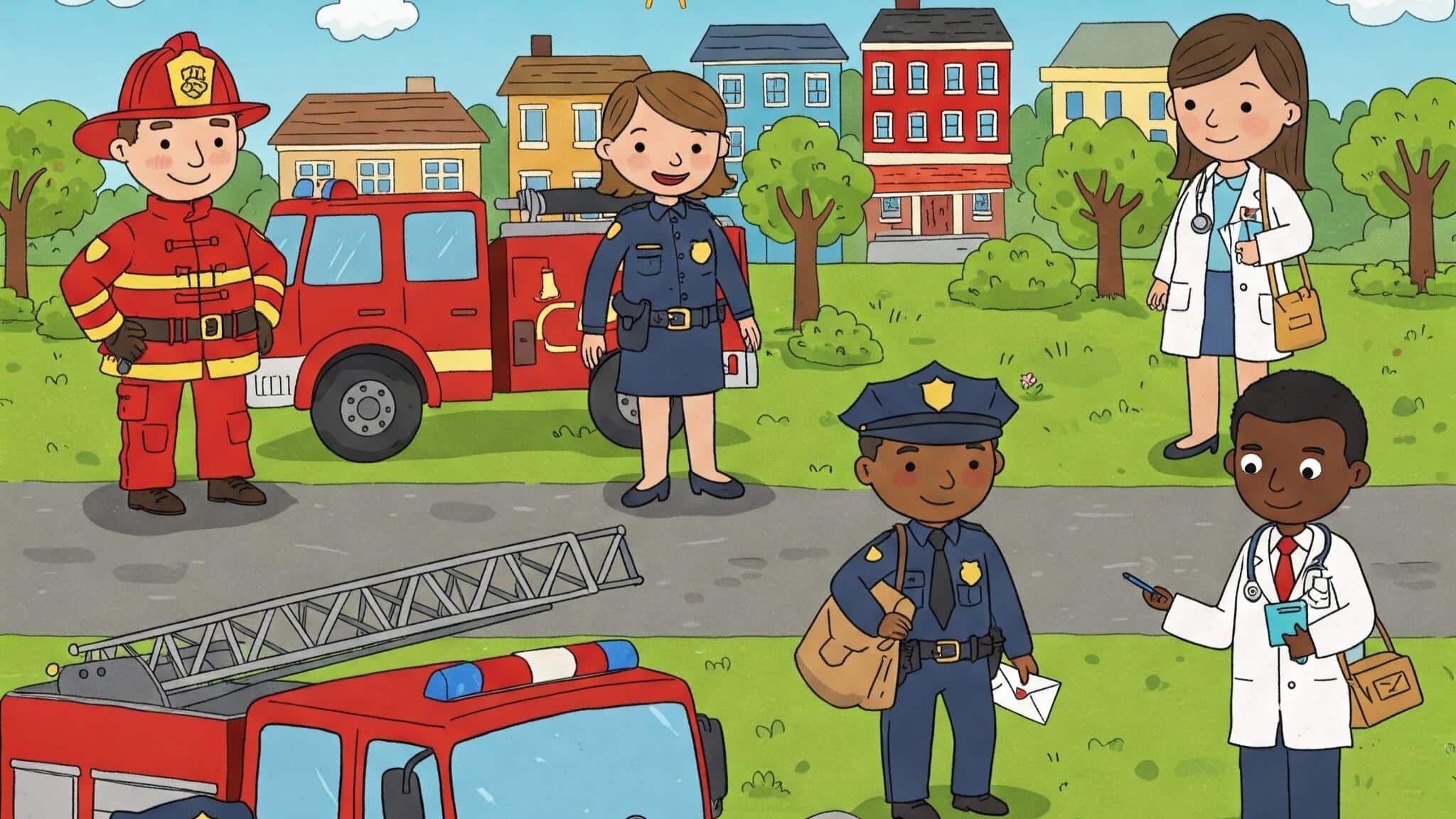
Community helpers are the people who work in neighborhoods to keep everyone safe, healthy, and happy.
These workers include firefighters who put out fires, police officers who protect streets, and doctors who treat sick patients. Mail carriers deliver letters, while teachers help children learn new things every day.
Garbage collectors keep neighborhoods clean, and bus drivers take people where they need to go. Dentists care for teeth, while librarians help find good books. Bakers make bread and treats, while farmers grow food for everyone to eat.
These helpers form the backbone of any town or city.
They perform jobs that benefit all residents and make daily life possible. Children often see these workers during their regular routines – at school, on walks, or during errands with family members.
Creative Art Projects Inspired by Helpers
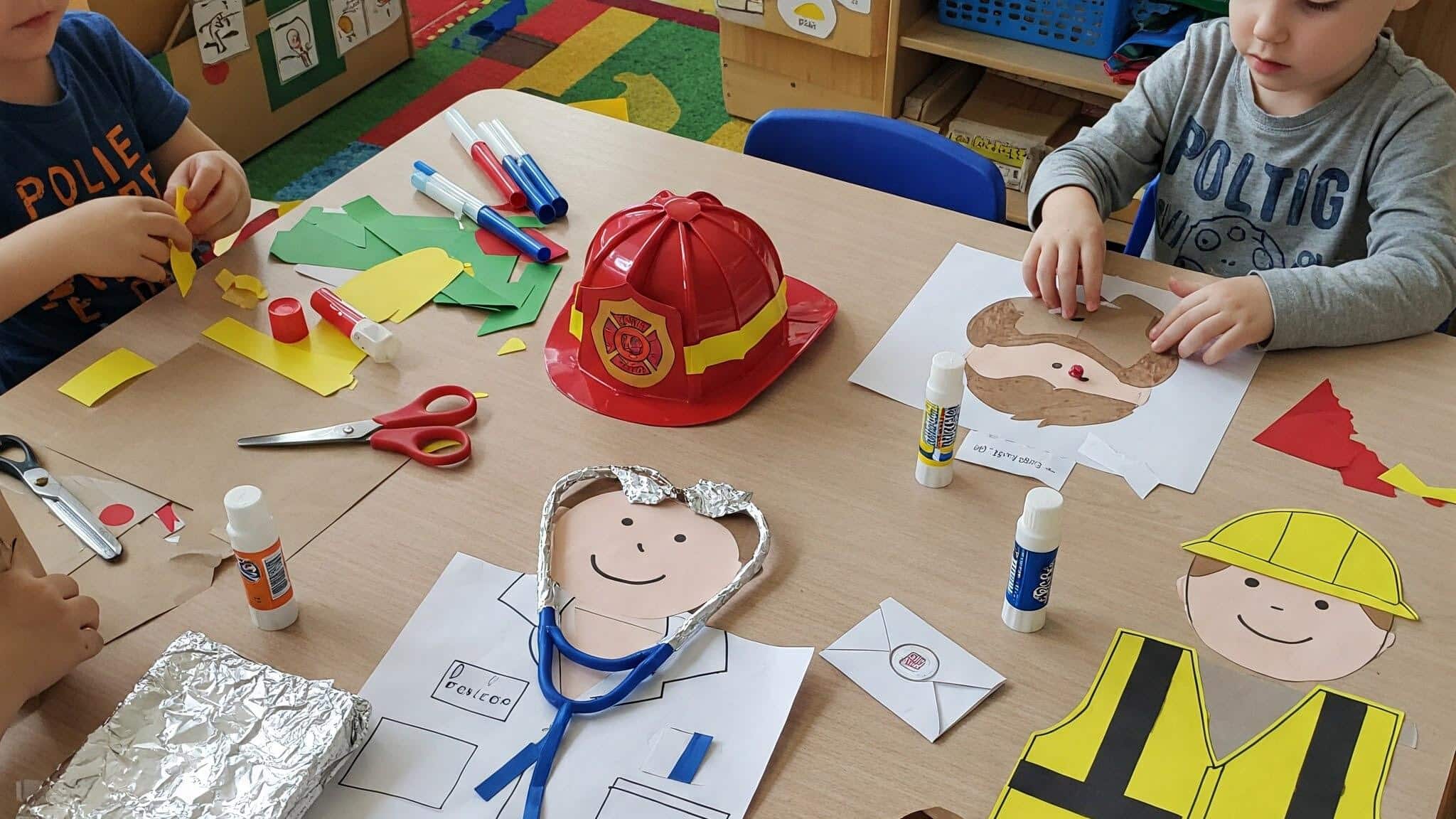
1. Firefighter Hat Craft
- Cut red construction paper into hat shapes
- Add yellow strips for reflective gear
- Write names on the front for personalization
2. Mail Carrier Bag
Draw flaps on brown paper bags. Cut openings for mail delivery. Add straps with extra paper strips. Decorate with postal service colors and symbols. This project connects writing and sorting skills with an understanding of how mail moves through communities.
3. Doctor’s Stethoscope
Connect two toilet paper tubes with yarn. Paint them black. Kids can listen to heartbeats with their finished stethoscopes. This simple craft sparks conversations about health and body awareness. Children often use these props for months in their pretend play scenarios.
4. Bakery Play-Dough
- Mix flour, salt, water, and food coloring
- Create pretend cookies, bread, and cakes
- Use cookie cutters for different shapes
- Place finished “baked goods” on trays
- Set up a store to sell the creations
5. Police Badge
Draw badge shapes on aluminum foil. Children can press designs into them with pencil erasers and add strings to wear them. This art project opens discussions about safety and community rules. The shiny finished badges become treasured items for role-play games.
6. Farm Animal Paper Plate Masks
Start with paper plates as the base for farm animal masks. Cut and glue construction paper to make ears, noses, and other features that show which animal each mask represents. Attach popsicle sticks to the bottom so children can hold the masks in front of their faces.
Let the kids color their animals with crayons or markers to add personal touches. Once complete, these masks become perfect props for acting out farm chores and learning about the important work farmers do.
7. Librarian Bookmarks
- Cut strips of cardstock
- Decorate with book themes and patterns
- Add tassels made from colorful yarn
8. Dentist Tooth Care Art
- Draw large tooth outlines
- Glue cotton balls on half to show “clean” teeth
- Color the other half yellow or brown for “dirty” teeth
- Add toothbrush cutouts
9. Teacher Apple Cards
Fold paper in half. Cut apple shapes from red paper and glue to the front. Write thank you notes inside. This thoughtful project helps children recognize teachers as community helpers. The cards make meaningful gifts that show appreciation for education workers.
10. Construction Worker Vests
- Cut open brown paper bags
- Cut holes for head and arms
- Add yellow paper strips for safety lines
11. Garbage Collector Sorting Game
Paint egg cartons different colors. Kids sort small items by color into each section, practicing recycling concepts. This game combines environmental awareness with recognition of sanitation workers’ importance. Children learn sorting skills while appreciating clean communities.
12. Chef Hat Creation
Use white paper strips taped together for the band. Attach tissue paper or coffee filters on top. Size to fit each child’s head. Add names with markers. Children feel important wearing their chef hats while learning about healthy eating and food safety.
13. Bus Driver Route Maps
- Draw roads on large paper
- Add buildings cut from magazines
- Create traffic signs from colored paper
14. Grocery Store Clerk Collage
Cut food images from magazines. Sort by food groups. Glue onto paper plates or bags. Label each group. This sorting activity teaches nutrition alongside community helper roles. Children practice categorization skills while learning about the people who help provide food.
15. Crossing Guard Signs
Paint paper plates red. Add “STOP” in white letters. Attach to craft sticks for handles. This project teaches traffic safety rules while highlighting the crossing guards’ important role. Children practice following directions when using their signs in movement games.
16. Veterinarian Clinic Art
- Draw animal outlines
- Add bandages made from paper strips
- Create paper cone “collars”
17. Weather Reporter Charts
Create weekly weather charts with symbols for sun, rain, clouds, and snow. Update daily like meteorologists do. This ongoing project teaches observation skills and weather patterns. Children feel important recording data just like real weather reporters.
18. Sanitation Worker Trucks
Use small boxes. Add bottle cap wheels. Paint in bright colors. Add details with markers. This recycled art project highlights the value of reducing waste. Children gain appreciation for sanitation workers while creating toys from useful materials.
19. Nurse Cap Folding
- Fold white paper into triangular shapes
- Create creases for the cap structure
- Add red cross symbols cut from paper
- Staple or tape edges to secure
20. Postal Worker Stamp Art
Create stamps by cutting small paper squares. Design unique pictures on each stamp. Add numbers to show “postage” amounts. Glue onto envelopes. This detailed art project incorporates math concepts with communication skills.
21. Flower Shop Tissue Paper Bouquets
Fold tissue paper into colorful flower shapes to create a florist shop in the classroom. Wrap the ends with green paper strips to form stems. Place these handmade blooms in small cups or jars to make pretty flower displays.
Add small price tags to each creation to practice writing numbers and learn about money. In this sweet play setting, children can take turns being shop workers and customers.
22. Pilot Paper Airplanes
- Fold paper airplanes using different designs
- Decorate with airline logos and colors
- Add windows and doors with markers
- Test which designs fly best
23. Cashier Money Art
- Trace coins on paper
- Rub with crayons to create coin rubbings
- Cut out the coin shapes
Dramatic Play: Pretend to Be a Community Helper
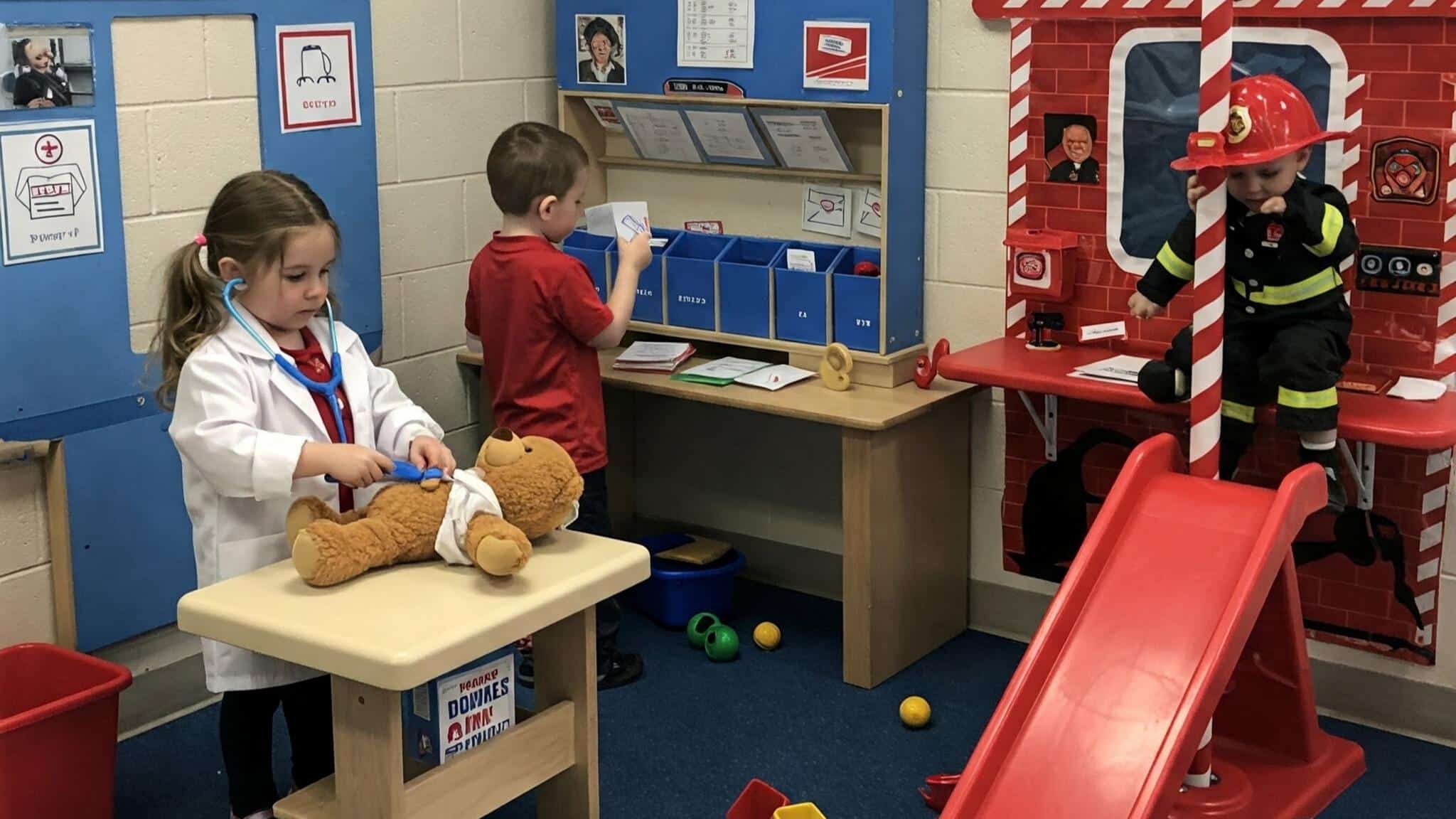
Children naturally love to pretend. Setting up dramatic play areas where they can act out different helper roles builds social skills and deepens understanding.
These community helpers preschool scenarios let children step into adult shoes and make sense of the world around them.
A classroom corner becomes a post office with mailbags, letters, and caps. Another space changes into a doctor’s office with bandages, stethoscopes, and appointment books.
A fire station area needs just helmets, hoses made from cardboard tubes, and boots to spark hours of imaginative play.
- Rotate play setups every few weeks to maintain interest.
- Use real photos of workers as visual references.
- Include books about each helper in the play area.
- Add writing materials for creating signs and notes.
Summing It Up
The art projects, dramatic play setups, and community walks we’ve shared need minimal supplies but offer maximum learning impact. When children engage with community helpers preschool concepts regularly, they build vocabulary, social skills, and appreciation for others.
Try setting up one dramatic play area this week, or gather supplies for a simple art project. Take a walk to spot helpers in action. The most important thing is making learning fun and natural.
Leave a comment below with your favorite activity!


